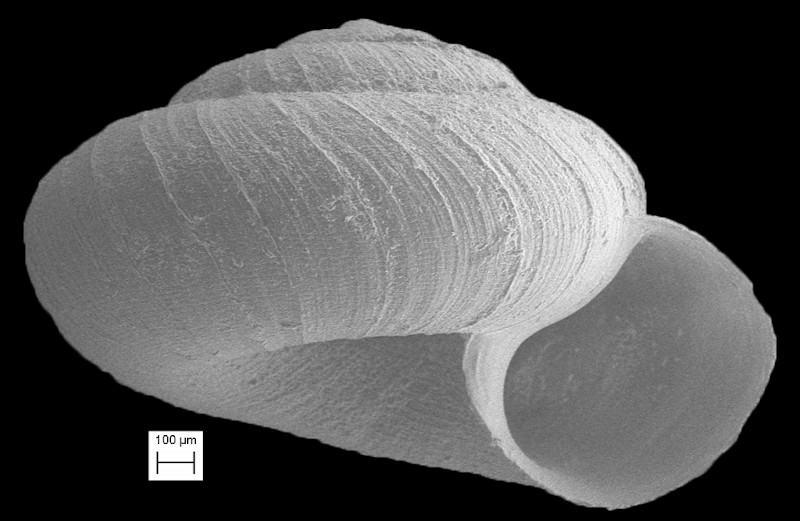|
Paralaoma servilis (Shuttleworth, 1852) |
Scanning Electron Micrograph (SEM) |
|
|
|
Among reeds, St. Marti d'Empuries, Catalonia, Spain (2.11 mm.). Collected by S. Peter Dance 1/5/1998. SEM performed by Dr. Harry Lee in collaboration with Dr. Ann Heatherington, Dept. of Geological Sciences, University of Florida, Gainesville, FL. |
|
Reaching sizes in excess of native congeners, this European non-native species was mistaken by us for the native Punctum pygmaeum, which species has been found in the U. S., specifically Bennington Co., VT (Lee, 2010, 2011), where it was taken in disturbed habitat in the company of other, better-known, European immigrants, e.g., Vertigo pygmaea (hypothetical at least), Discus rotundatus, and Oxychilus cellarius. Earlier records of P. pygmaeum in America had been properly dismissed as misidentifications (Pilsbry, 1948: 644, 649). Lee, H.G., 2010. Is it luck or good planning; Vermont campaign continues to thrive. Shell-O-Gram 51(2): 6-10. March Lee, H.G., 2011. Epilogue/prologue to “junkyard bug” with two early references. American Conchologist 39(3): 12. September. Pilsbry, H.A., 1948. Land Mollusca of North America (north of Mexico) vol. 2 part 2. Academy of Natural Sciences, Philadelphia. xlvi + 591-1113. March 19. |
